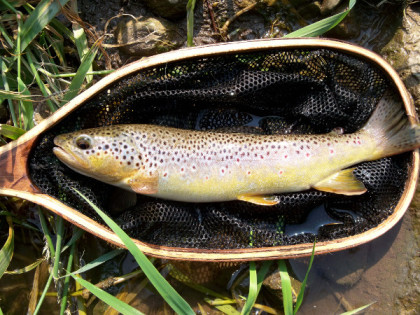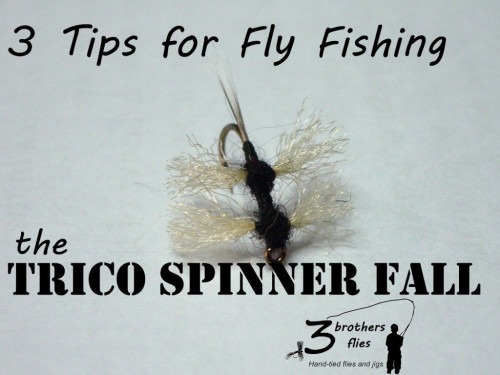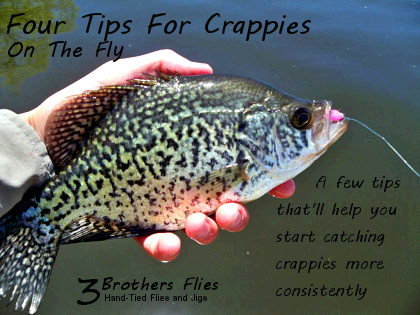The warmest day of trout fishing I’ve ever experienced also happened to be one of my best. It was one of those stifling hot, sticky July afternoons where you lament the fact that you have to wear long sleeves to avoid the nettles, but the Driftless, like many good trout destinations, guards it’s most precious creeks with a fierce wall of bluffs and thorns and more than one type of irritating weed, making long sleeves a necessity if you want to avoid plowing to the creek like a madman. The welts and rashes that these weeds leave are nearly as memorable as the spectacular valleys they grow in.
By late morning we’d hiked nearly a mile through narrow draws and thick brush and awful weeds, and the heat was beginning to get to us. The dense canopy of old-growth hardwoods that towered over the valley floor provided some relief and added a deeply majestic impression to the coulee, hiding the secrets of the valley with a lush blanket of green. This was rugged country, filled with deep coulees, sharp ridges, and dead-end draws that all look nearly alike. You cover lots of ground on this sort of trip, but the bluffs make you wonder if you’re actually getting anywhere. It wasn’t a particularly easy hike, especially in the heat, but the stream at the end of the journey was well worth it.
We rounded the corner of a tight ridge and paused. The valley opened up to a breathtaking canyon bordered by massive, towering limestone bluffs capped with ancient oaks and maples. The canyon floor was blanketed with a mix of wild raspberries and nettles and grass. Bluffs and old-growth forest made for a spectacular scene that I won’t soon forget. But the crown-jewel was the creek that carved it’s way through the fertile valley floor, rushing over boulders and brimming with trout.
The water ran a deep blue color and was stained just enough to hide an angler and get the trout excited. It was exactly what you hope for when you hike through stifling heat and nearly a mile of burnweed to toss some flies at trout, though seriously expecting this sort of thing can be quite dangerous for a fisherman’s fragile psyche. We jumped straight into the creek and cooled off a bit before stringing up the rods. I headed downstream armed with a nymphing setup and plowed through the head-high weeds.
The first stretch, a long, slow pool with a decent riffle at the head, failed to produce any trout in the bright overhead sun, though a few sporadic bankside risers hinted at some promising trout activity. The next piece of water was a sweet sight; a series of swift riffles and churning pocket water plunged into a half-dozen emerald pools. The water was quick enough to make it easy, and a few big boulders shaded part of the creek. In short, a perfect stretch of trout stream.
The fishing was good, too. I pulled over a dozen trout from the fastest spots and shaded pockets, mostly browns in the ten inch range, all wild and feisty despite the stifling heat. A thick-shouldered brown with deep, golden flanks and bold spots highlighted the afternoon.
Hot summer days on the streams aren’t always as good as that one. Anglers often battle scorching temps, oppressive humidity, lazy trout, and biting insects and weeds. But the hot summer months can also be a great time to hit the water. Hoppers bring big trout to the surface. Tricos give a challenging yet rewarding game of frustration, tiny dries, and sometimes triumph. And there’s always a flurry of activity at first and last light, along with the trout you’ll coax during the middle of the day.
Here are eight tips we’ve learned over the years for beating the heat and catching more trout during the summer months, in no particular order. They’re mostly aimed at the small trout streams of the Driftless, but they hold true for most trout streams around the Midwest…
#1: Get Stealthy
The low flows and ultra clear water of summer means ridiculously spooky trout in slow runs and pools. Stealth is an absolute necessity. Fortunately, bankside vegetation is at it’s peak, offering anglers a good way to conceal themselves from wary trout. I think good, dirty stealth is something that all truly good anglers have focused on and nearly mastered. It makes sense, really, because melting into the surroundings and approaching fish undetected only comes from a good understanding of where trout are going to be. It’s this sense of confidence and attention to detail that set the best anglers apart in the stealth game.
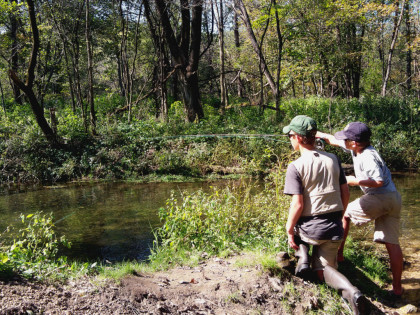
Trout sitting in low, clear water won’t tolerate a lazy, impatient fisherman, so be prepared to do some crawling and bushwacking for a few extra fish. It’s sweaty, muddy work, especially in the heat of summer, but it’s definitely worth the extra effort if you want to remain undetected.
You’ll learn quickly to walk softly and not wave your line over the fish, yet adding an extra element of stealth and thoughtfulness to your approach can really improve the catch rate. Think about casting angles, shadows, and any downstream trout that might bolt and spook the fish you’re working on. Wade if you must, but do it gently. Take the time to slow down, enjoy the creek, and plan your strategy of attack. Fish long, light leaders (as long as you can handle for small dries and nymphs, sometimes up to twelve or thirteen feet and 6X) and lighter rods. I’d guess that I spook more fish than I end up seeing on any particular outing, making stealth an awfully good and somewhat easy way to improve my angling.
#2: Find Cold Water
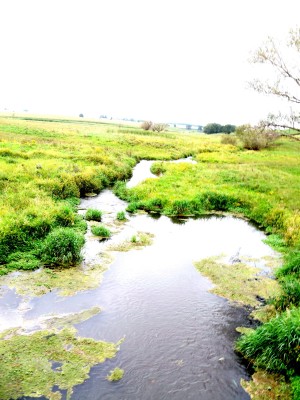
Spring brings cool, comfortable water, plenty of bugs, and happy trout, but once the dog days of summer hit, fishing can taper off rapidly as bright sun and warmer water put trout in a mood. Finding cold, comfortable water becomes key to finding happy summer trout, especially during those bright, scorching August afternoons when nothing seems to be moving.
There are a few good options for beating the heat and finding happy trout in the dog days of summer. First, try fishing higher up in the headwaters where cooler temps are more plentiful, particularly on spring creeks and tailwaters where springs and dams pump a consistent supply of icy water into the stream. Another good strategy is hitting the mouths of tributaries or venturing up the smaller creeks themselves. Tributary creeks are often quite a bit cooler than the main river and offer trout some thermal refuge, along with a good supply of food. Terrestrials can be deadly in these spots, and cold tributary mouths often surrender some big trout that nose up into the colder flow looking for a bit of relief from the heat. Fast water also holds more trout friendly temps (see tip #6) and can be very productive.
Note: Don’t accidentally kill trout! Watch water temps carefully and know when to give the coldwater fish a break. Hot water temps can put unnecessary and often lethal stress on trout when they’re caught. Most agree that 68 degree water temps is a good time to stop. For a more detailed look at safe summer trout temps, check out this piece from Hatch Magazine.
#3: Fish Smaller Flies
While trout will still occasionally snatch a #14 Hare’s Ear in faster riffles and runs, the combination of low, clear flows and tiny hatches makes micro nymphs and dries a good option for fooling trout consistently in the heat of summer.
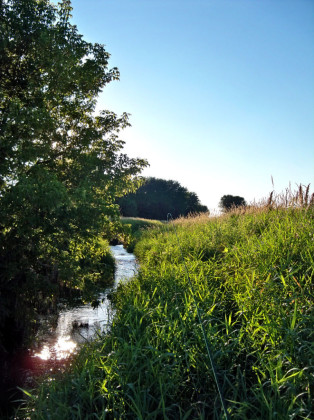
Small bugs are particularly good for those torturously slow pools and runs where fussy trout float like gazelles on an African plain at hunting time, ready to bolt at the slightest sign of anything unnatural or risky. Besides requiring a great deal of stealth and even more patience, these trout can be fooled with tiny, lightweight nymphs floated under a small yarn indicator or an unobtrusive dry fly, preferably a terrestrial pattern.
But micro nymphs have also proven themselves in faster, more fisherman-friendly waters. I haven’t found many days when trout will turn down a tiny #20 Pheasant Tail or Sunk Trico Spinner rolled along the bottom behind another nymph. It’s a deadly tactic, and the extra finesse a tiny nymph offers is often enough to coax a trout to eat even during the middle of the day.
#4: Fish Bigger Flies
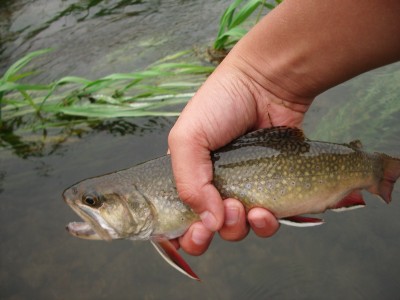
There’s nothing like watching a big trout smash a big dry on a hot summer afternoon. Once mid-July and August roll around, trout stop eating the perversely-tiny bugs of early and mid-summer and start attacking hoppers like smallmouth on steroids. It’s some of the most exciting dry-fly fishing of the season.
Cut banks and grassy meadow stretches are prime spots for tossing big terrestrials. Moths, hoppers, crickets, and all sorts of bigger bugs fall from the grass, and trout learn to watch for any big, lively critter hitting the surface. Big Stimulators in #6 to #12 are a good general match for a wide variety of terrestrials that end up in the creek. Hopper patterns in the same sizes are deadly. And if you mind your presentation and approach, leaders for bigger bugs don’t need to be quite as long and fine as those for tiny nymphs, bringing a nice change of pace from the tiny bugs.
#5: Fish Terrestrials
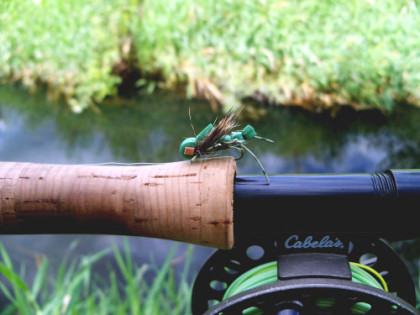 This one is obvious yet too important to leave out. Ants, beetles, hoppers, and attractor dries are some of the most consistent producers for summer trout. Drift them through pools, slap them near the bank, or toss them through meadow stretches (finding grassy sections or areas that are conducive to bugs falling into the stream is key). Trout love them. Don’t neglect to fish your terrestrials!
This one is obvious yet too important to leave out. Ants, beetles, hoppers, and attractor dries are some of the most consistent producers for summer trout. Drift them through pools, slap them near the bank, or toss them through meadow stretches (finding grassy sections or areas that are conducive to bugs falling into the stream is key). Trout love them. Don’t neglect to fish your terrestrials!
#6: Hit The Fast Water
Having spent the first few years of my fishing career on warmwater lakes where most fish retreat to the depths once summer hits, going shallow towards the fast water seemed a bit counterintuitive at first, but it can really hold great rewards. There are two primary reasons fast water holds plenty of trout: oxygen and cooler water temps. As water warms, its ability to hold good concentrations of dissolved oxygen – a critical aspect of a trout’s survival and comfort – suffers greatly, pushing trout out of areas with slower current and warmer water. Fast spots hold some of the most oxygenated water in the stream, acting as a natural aerator and providing cool, comfortable temps. This is particularly important on freestones and lower stretches of spring creeks that don’t receive a constant supply of good, cold water.
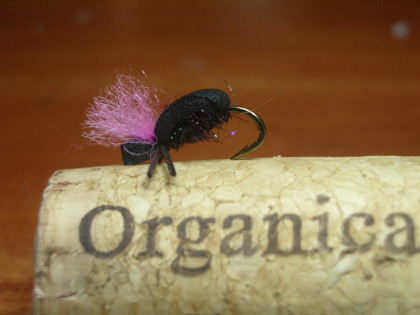
Faster riffles and runs that brush up against banks with brush or grass or undercuts that shade the water are particularly productive. They’re usually loaded with hoppers and ants and beetles, which is a good equation for producing eager trout.
Trout holding in fast water also tend to be less discriminating in their fly selection, so it’s naturally a good place to target fish during the summer months.
#7: Early and Late
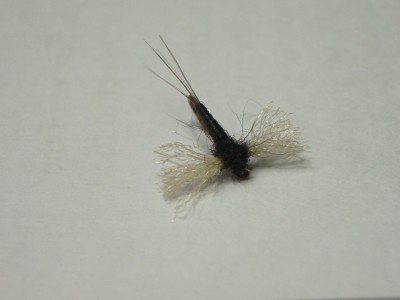
Some of the best fishing of the summer can be found right at dawn or dusk. The lower light levels bring colder temps and plenty of bugs on most days, which usually means some good fishing. Tricos are notorious for blanketing streams at some uncivilly early hour of the morning, usually when air temps hit somewhere around 68*F. These tiny bugs can provide some of the most consistent, frustrating, and rewarding dry fly fishing in the Driftless starting around early July and running through late September (Also, check out the post on 3 Tips for the Trico Spinner Fall and 4 top flies for the Trico hatch for recipes, Trico strategies, and a few good bugs).
The last hour of the day can also bring some good fishing. In the midwest, many species of caddis hatch in the evening, and there are usually a few trout rising to various bugs as the sun slips behind the trees. A CDC & Elk or a small parachute Adams is good for these sporadic risers.
Night fishing can also be a good bet in the summer. The legendary Hex hatch starts around late June and can provide great fishing when the giant bugs start popping a bit after dark. Mousing can also be pretty epic as bigger browns lose some of their wariness under the cover of darkness.
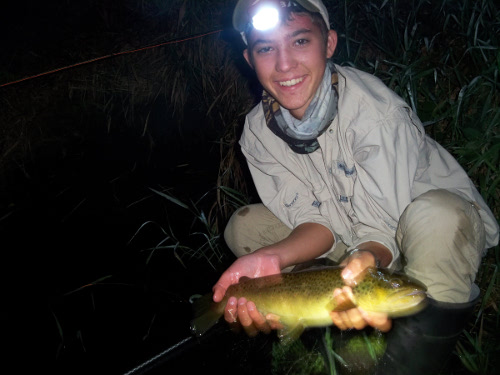
(note:hoppers and terrestrials are one important exception – those bugs are more active in the heat, so midday can be quite good if the water stays cool enough).
#8: Sunken Bugs and Dry Dropper rigs
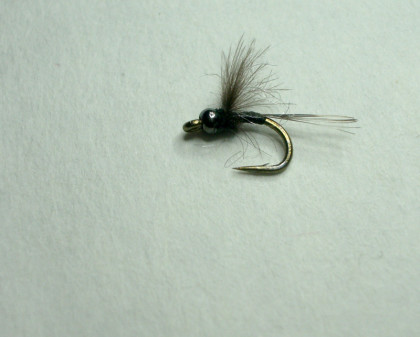
One of my absolute favorite tricks during the Trico hatch is hanging a sunken spinner off the bend of a terrestrial or nymph. While fishing sunken spinner patterns is nothing new in the fly fishing scene, the sunken spinner adds a bit of finesse that’s enough to fool plenty of stubborn trout, particularly when the hatch isn’t substantial enough to produce consistent risers. But sunken spinner fishing isn’t limited to the few hours of the day when Tricos are on the water. After seeing tons of these bugs wash downstream and get smashed in the current, trout have no problem eating a sunken spinner nearly all day long during the summer and early fall.
Sunken terrestrials can also be killer. Sunk beetles, ants, and even hopper imitations are great for drifting along grassy banks and will often catch trout that aren’t quite willing to grab a bug off the surface. The Black Wet Fly is a good example of an effective sunken terrestrial.
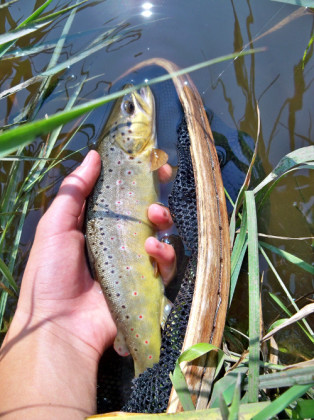
Dry-dropper rigs are perhaps the ultimate searching strategy. I often fish with a trio of flies to match a few different bugs that are around this time of year. Start with a big hopper or terrestrial like a Stimmy, drop a nymph or sunken terrestrial off the bend (scuds or pink squirrels are usually good in the Driftless), and trail a sunken trico or micro nymph behind the second fly where regulations allow. This rig very efficiently covers the three major bugs trout are eating in the summer – terrestrials, random nymphs/scuds/sunk terrestrials, and tricos/tiny nymphs.
Perhaps the best part of tossing three flies is the ability to fine tune your combination once you find what the trout are after on a particular day. It’s really a deadly and very efficient tactic.
—————o—————
While not all ventures on the creek are quite as good as that day in the valley, summer is an awfully good time to be a trout fisherman. Terrestrials, tricos, and flurries of action at low light bring some of the most exciting and rewarding fly fishing of the season. Hopefully these tips will help you catch a few more trout in the summer months.

